How does a collar bone heal. Clavicle Fractures: Types, Healing Process, and Treatment Options
How do different types of clavicle fractures occur. What factors influence the healing of a broken collarbone. When is surgery necessary for a clavicle fracture. How does the position of a fracture affect treatment decisions.
Understanding Clavicle Fractures: Types and Causes
Clavicle fractures, commonly known as broken collarbones, are injuries that occur when direct trauma is applied to the upper limb. These fractures can result from various incidents, ranging from simple falls during sports activities to high-velocity accidents.
There are three main types of clavicle fractures, categorized based on their location:
- Mid-shaft fractures: The most common type, occurring in the middle of the clavicle
- Lateral clavicle fractures: Occurring closest to the shoulder joint
- Medial clavicular fractures: Occurring closest to the sternum or chest bone (least common)
The increasing popularity of cycling has led to a rise in clavicle fractures, as falls from bicycles are a frequent cause of this injury.

The Natural Healing Process of Clavicle Fractures
Can bones heal on their own without surgical intervention? Yes, all bones have the innate ability to heal themselves. The healing process of a clavicle fracture involves several stages:
- Formation of a blood clot around the broken bone
- Release of healing factors that stimulate the body’s response
- Differentiation of blood cells into bone-forming cells
- Development of callus, a healing tissue that surrounds the fracture site
- Gradual stabilization of the fracture over 2-4 weeks
It’s important to note that surgery does not directly cause bone healing. Instead, surgical intervention aims to position the bone fragments in a stable and acceptable alignment, facilitating the natural healing process.
Factors Influencing Clavicle Fracture Healing
Several factors can impact the healing of a clavicle fracture:
- Smoking: Even one cigarette per day can significantly impair bone healing
- Age: Older individuals may experience a slower healing response
- Genetic factors: Some genetic conditions can interfere with bone healing
- Non-steroidal anti-inflammatory medications: May have a minimal effect on healing
Among these factors, smoking is the most controllable and has the most substantial impact on bone healing. Patients with clavicle fractures are strongly advised to abstain from smoking to promote optimal healing.

Conservative Treatment vs. Surgical Intervention
Do all clavicle fractures require surgery? No, most broken collarbones can be treated without surgical intervention. The decision between conservative treatment and surgery depends on several factors:
- Fracture location
- Degree of displacement
- Amount of shortening
- Potential impact on long-term function
Mid-shaft fractures with minimal shortening or gap can often be treated conservatively with a sling for comfort. As the fracture stabilizes and symptoms improve, patients can gradually reduce sling use.
When is Surgery Necessary?
Surgery may be recommended in the following scenarios:
- Lateral clavicle fractures: These are more unstable and have a higher risk of non-union
- Significantly displaced fractures: When there’s excessive movement at the fracture site
- Shortened fractures: When the clavicle length is reduced by more than several centimeters
It’s worth noting that displacement alone (where the bones appear in a zig-zag fashion on X-ray) doesn’t necessarily require surgery if the overall length is maintained.

The Impact of Fracture Position on Treatment and Healing
The position in which a clavicle fracture heals can significantly affect long-term function. A shortened clavicle (reduced in length by more than several centimeters) can lead to abnormal function and increased stress on the entire shoulder girdle. In such cases, surgical intervention may be warranted to restore proper length and alignment.
Conversely, fractures that appear displaced on X-ray but maintain overall length can often heal well without surgery. While there may be some visible deformity as the collarbone heals, the final functional outcome can be very good.
Rehabilitation and Recovery After Clavicle Fracture
Regardless of whether a clavicle fracture is treated surgically or conservatively, proper rehabilitation is crucial for optimal recovery. The rehabilitation process typically involves:
- Initial immobilization: Using a sling to protect the healing fracture
- Gradual range of motion exercises: As pain subsides and healing progresses
- Strengthening exercises: To restore muscle function around the shoulder girdle
- Return to activities: Progressive reintroduction of daily activities and sports
The duration of recovery can vary depending on the severity of the fracture and the chosen treatment method. Most patients can expect a full recovery within 3-6 months, although return to high-impact activities may take longer.

Preventing Clavicle Fractures: Safety Measures and Precautions
While not all clavicle fractures can be prevented, certain measures can help reduce the risk of injury:
- Wearing appropriate protective gear during sports activities
- Practicing proper falling techniques in sports like cycling and skiing
- Maintaining bone health through adequate nutrition and exercise
- Ensuring a safe environment to prevent accidental falls
For athletes and individuals engaged in high-risk activities, specific training programs focusing on shoulder stability and proper biomechanics can help minimize the risk of clavicle fractures.
Long-Term Outcomes and Potential Complications
What are the potential long-term effects of a clavicle fracture? Most patients who receive appropriate treatment for their clavicle fracture can expect excellent long-term outcomes. However, some potential complications may arise:
- Nonunion: Failure of the fracture to heal properly
- Malunion: Healing in an improper position, potentially affecting function
- Persistent pain or discomfort
- Reduced range of motion in the shoulder
- Cosmetic deformity
Regular follow-up with an orthopedic specialist can help monitor healing progress and address any potential complications early on. In most cases, even if there is a visible bump or irregularity along the healed clavicle, it does not significantly impact function or cause long-term issues.

The Role of Physical Therapy in Recovery
Physical therapy plays a crucial role in the rehabilitation process following a clavicle fracture. A tailored physical therapy program can help:
- Restore range of motion in the shoulder and neck
- Strengthen the muscles surrounding the shoulder girdle
- Improve posture and scapular stability
- Prevent complications such as frozen shoulder
- Facilitate a safe return to sports and daily activities
Working closely with a physical therapist can significantly enhance recovery outcomes and help patients regain full function of their shoulder and upper extremity.
Advances in Clavicle Fracture Treatment
Recent advancements in orthopedic surgery have led to improved treatment options for clavicle fractures. Some notable developments include:
- Minimally invasive surgical techniques
- Advanced plating systems for better fracture fixation
- 3D printing technology for custom implants
- Improved imaging techniques for more accurate diagnosis and treatment planning
These advancements have contributed to better outcomes, faster recovery times, and reduced complications in the treatment of clavicle fractures.
![]()
The Future of Clavicle Fracture Management
Ongoing research in the field of orthopedics continues to explore new treatment modalities for clavicle fractures. Some areas of focus include:
- Biological augmentation to enhance bone healing
- Novel biomaterials for fracture fixation
- Personalized treatment approaches based on patient-specific factors
- Advanced rehabilitation protocols utilizing virtual reality and telehealth
As our understanding of bone healing and biomechanics improves, we can expect further refinements in the management of clavicle fractures, leading to even better outcomes for patients in the future.
Special Considerations for Athletes with Clavicle Fractures
Athletes, particularly those involved in contact sports or activities with a high risk of falling, face unique challenges when dealing with clavicle fractures. Special considerations for this population include:
- Timing of return to sport
- Need for protective equipment upon return
- Psychological aspects of injury and recovery
- Risk of re-injury and preventive strategies
A multidisciplinary approach involving orthopedic surgeons, sports medicine physicians, physical therapists, and athletic trainers is often necessary to ensure optimal outcomes and safe return to sport for athletes with clavicle fractures.

Clavicle Fractures in Pediatric Patients
Clavicle fractures in children and adolescents present unique challenges and considerations:
- Higher potential for remodeling and natural correction of deformities
- Different fracture patterns compared to adults
- Considerations for growth plate injuries in certain fracture types
- Balancing the need for intervention with the body’s natural healing abilities
Treatment approaches for pediatric clavicle fractures often lean towards conservative management, taking advantage of the enhanced healing potential in younger patients. However, careful monitoring and individualized treatment plans are essential to ensure proper healing and prevent long-term complications.
The Psychological Impact of Clavicle Fractures
While much focus is placed on the physical aspects of clavicle fractures, the psychological impact of this injury should not be overlooked. Patients may experience:
- Anxiety about the healing process and potential long-term effects
- Frustration with activity limitations during recovery
- Body image concerns related to visible deformities
- Fear of re-injury, particularly in athletes
Addressing these psychological aspects through patient education, support, and, when necessary, referral to mental health professionals can contribute significantly to overall recovery and patient satisfaction.

The Role of Nutrition in Clavicle Fracture Healing
Proper nutrition plays a crucial role in the healing of clavicle fractures. Key nutritional factors that can support bone healing include:
- Adequate calcium and vitamin D intake
- Sufficient protein for tissue repair
- Vitamins C and K for collagen formation and bone mineralization
- Zinc and copper for enzyme function in bone formation
Patients recovering from clavicle fractures may benefit from nutritional counseling to ensure they are providing their bodies with the necessary building blocks for optimal bone healing.
Clavicle Fractures | Glenelg Orthopaedics
Book A Consultation
What type of clavicle fractures are there and how are they treated?
Clavicle fractures (collar bone fractures) occur after direct trauma is transmitted through the upper limb. This can occur from simple measures such as falling, such as whilst playing sport such as Australian Rules Football, or after high velocity trauma such as a motor bike accident. A very common sporting injury that results in clavicle fractures is a fall from a push bike and with the increase in popularity of cycling over the last decade, the number of clavicle fractures has increased with the time.
What types of clavicle fractures are there?
The fractures can be broadly described by the location in which they occur, such as a fracture of the clavicle occurring in the middle of the bone compared to fractures occurring at either end. Fractures that occur closest to the shoulder joint are known as lateral clavicle fractures, while ones closest to the sternum or chest bone are known as medial clavicular fractures. The most common type of fracture are the ones at the middle of the clavicle known as mid-shaft, with the second most common being lateral clavicle fractures and the least being the medial.
The most common type of fracture are the ones at the middle of the clavicle known as mid-shaft, with the second most common being lateral clavicle fractures and the least being the medial.
Does the position of the clavicle fracture determine how it is treated?
Yes. Lateral clavicle fractures lead to greater instability (movement) of the break and are at much higher risk of the fracture not healing. Therefore, most lateral clavicle fractures are treated with surgery unless they are completely undisplaced (haven’t moved significantly from their original position). Mid-shaft medial clavicle fractures can heal without surgery.
What are the ways of healing a bone?
All bones heal on their own. Surgery cannot make a bone heal. Surgery reduces a bone into a stable and acceptable position so that the bone then heals. If a fracture is greatly displaced (if there is too much movement of the break) then there is a greater chance that the bone may not heal. In this scenario it may require surgery to place the bone into a more acceptable position to allow it to heal.
Are there things that prevent the healing of bone?
Yes. Smoking has a significant part to play in affecting the healing of a bone. It has been shown that any number of cigarettes, including just one a day, reduce the healing response. As such, with any fracture it is strongly recommended that a patient does not smoke. There are genetic factors that also stop the healing of bone and certainly with age the healing response is not as good, but these other factors are difficult to control, while smoking is certainly a major factor which can be controlled.
Other factors which could play a role in affecting healing are non-steroidal anti-inflammatory medication, but this is minimal compared to the smoking factor.
What determines whether a patient requires surgery or whether they can be treated without surgery?
Most broken bones can be treated without surgery. The question remains, though, whether it will heal in an appropriate position so that function is restored and pain is minimal to non existent.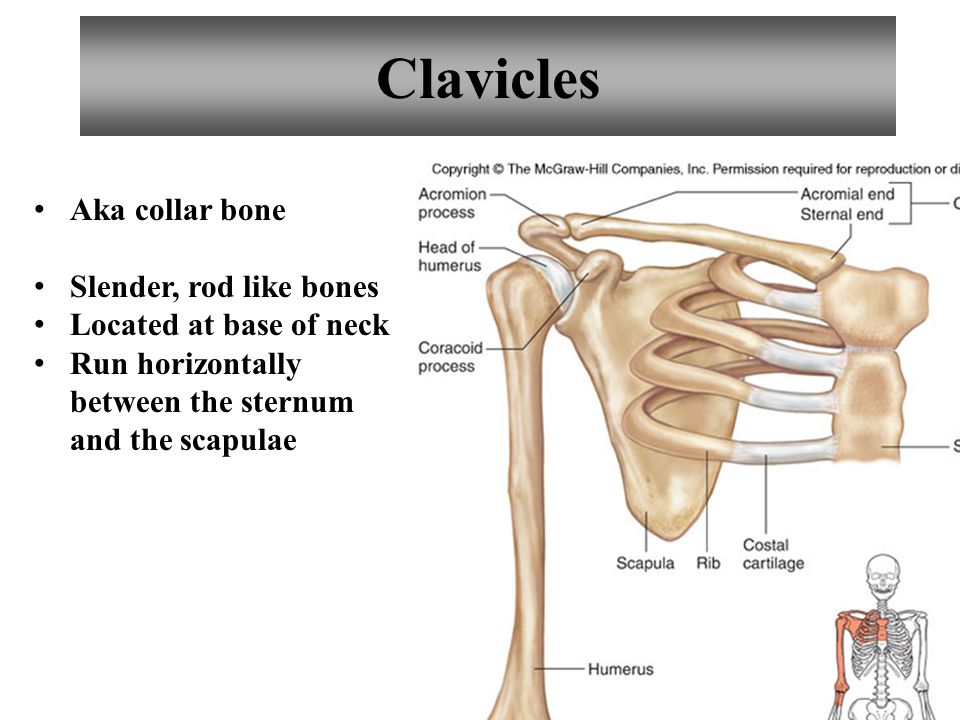 Mid-shaft fractures where there is no significant shortening or gap, can be treated with a sling for comfort, coming out of the sling as symptoms improve and as the fracture becomes more stable.
Mid-shaft fractures where there is no significant shortening or gap, can be treated with a sling for comfort, coming out of the sling as symptoms improve and as the fracture becomes more stable.
Following a fracture, a large blood clot occurs around the broken bone. This has healing factors in it that stimulates the response of the body to cause healing. The blood then differentiates or changes to form healing bone cells which then lay down healing tissue known as callus. After approximately 2 to 4 weeks the bone becomes surrounded by this “glue” of healing bone which allows it to become more stable. As such most clavicle fractures will go on to heal, assuming that there is not too much movement or there is not excessive smoking or abnormal genetic factors.
The position the bone heals in will affect function long term. If the clavicle is healing in a particularly shortened position (the length is actually reduced by more than several centimetres), it has been shown to lead to abnormal function and increased stress on the whole of the shoulder girdle.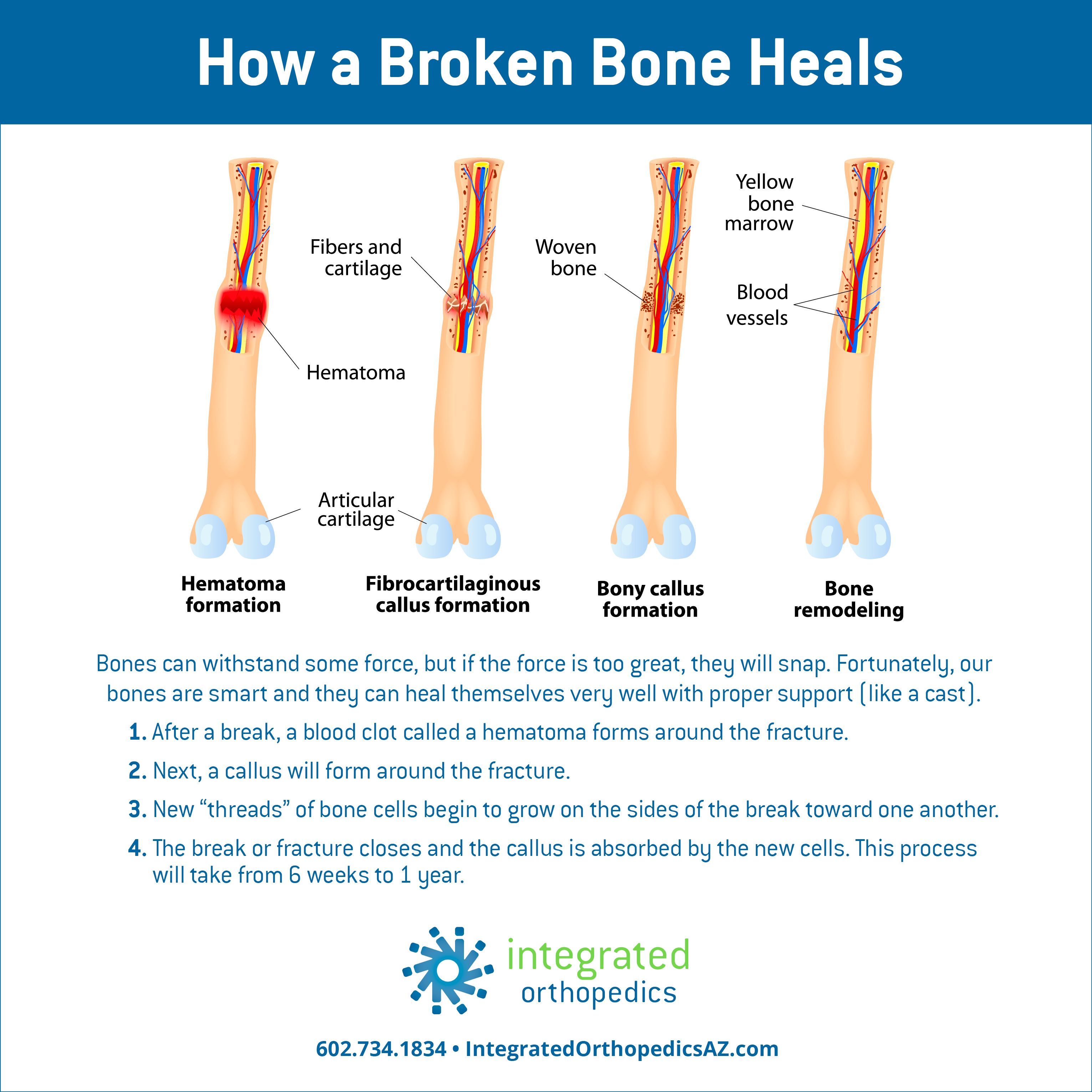 In such scenarios, this may warrant surgery. Displacement (the bones are translated but not shortened and so that they appear like a zig zag fashion on x-ray) doesn’t necessitate surgery. Whilst the x-rays can look abnormal the bone can heal in a reasonable position and whilst there may be some deformity on the collar bone as it heals, the final functional position will be very good.
In such scenarios, this may warrant surgery. Displacement (the bones are translated but not shortened and so that they appear like a zig zag fashion on x-ray) doesn’t necessitate surgery. Whilst the x-rays can look abnormal the bone can heal in a reasonable position and whilst there may be some deformity on the collar bone as it heals, the final functional position will be very good.
Often the patient is very concerned about the picture, but they can be reassured that whilst the x-ray may look abnormal if it is not shortened and it goes on to heal that there can be very good function and most patients will do extremely well with treatment this way.
Often the patient is concerned about a lump in the clavicle because of the deformity. Does this necessitate surgery to reduce the cosmetic abnormality?
Whilst cosmesis or deformity of the clavicle is often the patient’s concern, surgery would involve an incision and scar over the clavicle or an insertion of a metal plate. Whilst this may make the clavicle better aligned, the plate can become more prominent at a later date and therefore may necessitate a second operation to have this removed. The scar itself will lead to numbness below the scar which usually improves but may not fully resolve. Therefore, chasing a better appearing clavicle, the scar associated with the underlying plate and the associated numbness may negate the benefit that you get from plating. As such, in Dr Nimon’s experience, plating a clavicle for appearance alone is not warranted. What does necessitate treatment are factors that affect healing of the bone such as excessive movement, too large a gap or excessive shortening.
Whilst this may make the clavicle better aligned, the plate can become more prominent at a later date and therefore may necessitate a second operation to have this removed. The scar itself will lead to numbness below the scar which usually improves but may not fully resolve. Therefore, chasing a better appearing clavicle, the scar associated with the underlying plate and the associated numbness may negate the benefit that you get from plating. As such, in Dr Nimon’s experience, plating a clavicle for appearance alone is not warranted. What does necessitate treatment are factors that affect healing of the bone such as excessive movement, too large a gap or excessive shortening.
If a gap doesn’t matter in most cases because of the large blood clot around the clavicle, why would it necessitate treatment in other cases?
In most cases, a gap which looks excessive on x-ray does not hinder healing and the bones do go on to unite. However, if the gap is more excessive than normal, it may mean that soft tissue has got interposed or placed between the two broken bones which then stop the two bones becoming sticky and healing together.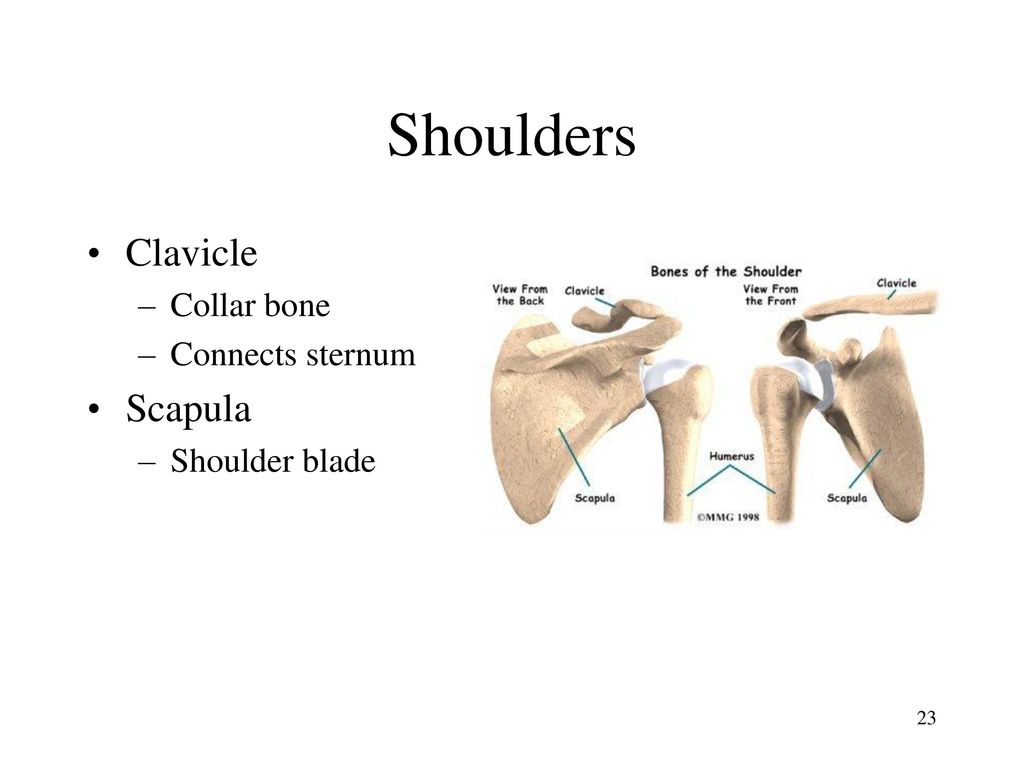 In this situation, one may wish to consider surgical intervention.
In this situation, one may wish to consider surgical intervention.
Apart from the scar, are there any other risks of surgery?
Yes there are. Clavicular fracture surgery should never be undertaken lightly. There have been reported cases of major bleeds or vascular events, and there is a risk of even excessive bleeding or developing or emboli which can lead to life threatening complications. As such we believe it is appropriate that the patients understand that surgery is not without risk in this scenario and that surgical intervention is not undertaken lightly.
The above sounds serious. Are there benefits of operating?
Yes. In the vast majority of people, once surgery is undertaken their pain is significantly better and, with the restoration of the alignment of the clavicle, this then leads to better function in the shoulder. If the alignment and the position of the clavicle is not severely displaced then the patient is best treated without an operation.
In those cases that have not had surgery and the fracture has not healed, when surgery is undertaken a similar approach is used but because of the scar tissue around the bone, it is impossible to get the bone out to full length. Therefore, in those cases the clavicle always heals in a shorter position.
What is the treatment after surgery?
The patient requires an overnight stay in hospital. The following morning, they will be reviewed by a physiotherapist who will fit them with a removable sling which will allow them to come out for exercises and dressing. They will be instructed on how to wash. It is important to wash in the axilla (armpit) and use spray on deodorant often supplemented with tinea powder to absorb moisture. We would then recommend that clothes be worn normally to reduce the risk of skin against skin perspiration because this can lead to thrush developing in the axilla.
The patient will then return for a review at Glenelg Orthopaedics 8 days after surgery, for review of the wound and referral to a physiotherapist of their choice.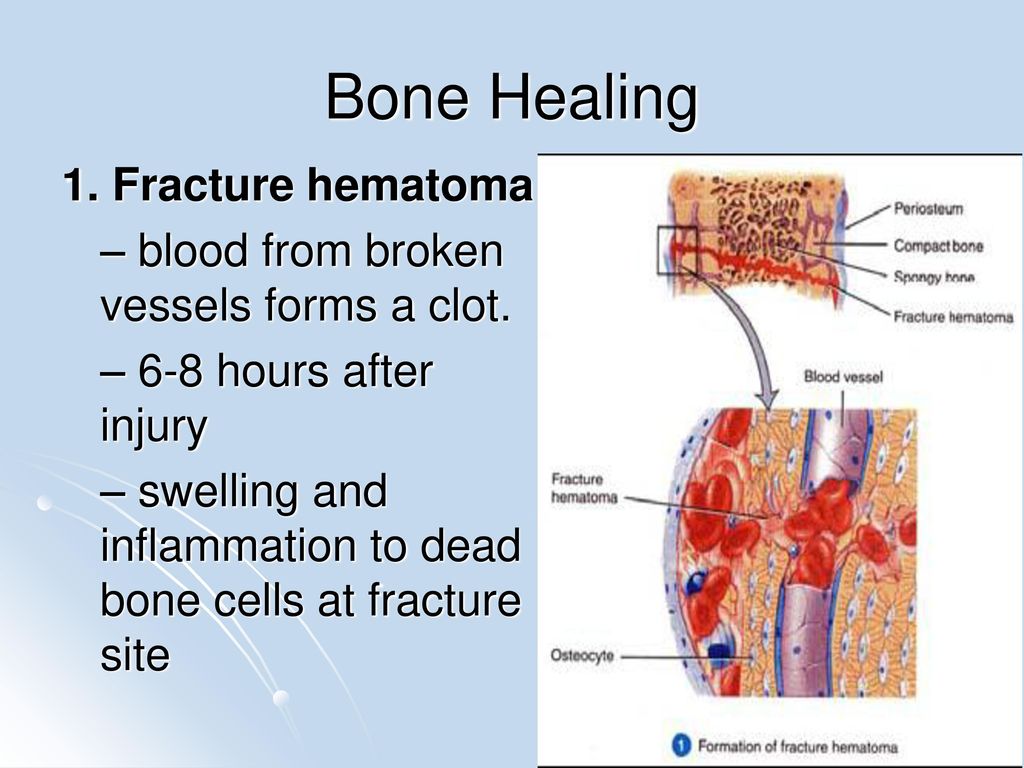 The sling is worn for 4 to 6 weeks, coming out for exercises and the patient returns to driving after the 6 week mark. If they can return to work prior to this and they are able to do so, then they should not do heavy manual duties. Assuming the fracture is going on to heal without complication, they should be able to go back to simple duties at the 6 to 8 week mark, not lifting heavy items, and can return to full duties 3 months after surgery. At this stage one would expect to have full range of motion of the shoulder and would then suggest review at the 9 month mark, should the patient warrant removal of the metal plate at a later date.
The sling is worn for 4 to 6 weeks, coming out for exercises and the patient returns to driving after the 6 week mark. If they can return to work prior to this and they are able to do so, then they should not do heavy manual duties. Assuming the fracture is going on to heal without complication, they should be able to go back to simple duties at the 6 to 8 week mark, not lifting heavy items, and can return to full duties 3 months after surgery. At this stage one would expect to have full range of motion of the shoulder and would then suggest review at the 9 month mark, should the patient warrant removal of the metal plate at a later date.
In summary, clavicle fractures are becoming more common. The vast majority lie in an acceptable position and do not require surgery but there are some, the ones that are shortened or occur laterally, that are more likely to require surgical intervention. At Glenelg Orthopaedics you can be reassured that we will present a balanced discussion about the pros and cons of surgery so that you can make an informed decision about how you would like to proceed.
Glenelg Orthopaedics – Providing Quality Orthopaedic Care
08 8376 9988
Clavicle Fracture – Broken Collar Bone
Click the white PLAY button to start video.
Clavicle fractures are a common orthopedic injury, especially among infants and young children. The clavicle, known as the collarbone, is a long bone located at the top of the chest. A clavicle fracture most frequently results from trauma. The majority of clavicle fractures can heal without surgery. If surgery is necessary, the bone is secured with surgical hardware, such as plates and screws.
Introduction
Clavicle fractures are a common orthopedic injury, especially among infants and young children. The clavicle, known as the collarbone, is a long bone located at the top of the chest. A clavicle fracture most frequently results from trauma. The majority of clavicle fractures can heal without surgery. If surgery is necessary, the bone is secured with surgical hardware, such as plates and screws.
Anatomy
The clavicle is a long bone located on the upper chest. It is part of the shoulder joint. The clavicle provides stability for arm movements. The clavicle is not fully developed (ossified) until the late teens or early 20s.
Causes
Trauma is the main cause of clavicle fracture. A forceful impact to the shoulder area during a motor vehicle collision, a fall, or sports can break the clavicle. Newborns can experience a fractured clavicle as the result of a difficult birth.
Symptoms
You may hear a snapping sound and feel immediate pain when the clavicle breaks. The pain may increase and become sharp with movement. Bruising and swelling are common. If the bone has moved out of position, it may appear as a bump under the skin. Your shoulder area may not look as upright as usual. It may appear slumped forward and downward.
Diagnosis
You should contact your doctor immediately or go to the emergency department if you suspect you have broken your clavicle. Your doctor will review your medical history and conduct a physical examination. X-rays are taken to see the location and extent of the fracture.
Your doctor will review your medical history and conduct a physical examination. X-rays are taken to see the location and extent of the fracture.
Treatment
Clavicle fractures are most commonly treated with slings or a figure eight splint. A sling supports the arm and positions the shoulder to allow the fracture to heal. A figure eight splint wraps around the front of the shoulders and crosses in the back. It helps to maintain shoulder posture while the bone heals. Over-the-counter or prescription medications are used for pain relief. You may participate in rehabilitation therapy to help regain strength and motion following splinting or surgery.
Surgery
The majority of clavicle fractures can be treated without surgery. However, opinions about surgery are ever changing. Recent research shows that many patients that were not treated with surgery have had persistent problems. Your doctor will discuss the benefits of both procedures with you. Surgery may be needed for fractures that fail to heal, broken bones that come through the skin, or broken bones that are a threat to nearby nerves, blood vessels, soft tissues, or joints. The surgery involves aligning the bone in the proper position and securing it in place with surgical hardware, such as screws and plates. The surgical hardware may or may not be removed after the bone has healed.
Surgery may be needed for fractures that fail to heal, broken bones that come through the skin, or broken bones that are a threat to nearby nerves, blood vessels, soft tissues, or joints. The surgery involves aligning the bone in the proper position and securing it in place with surgical hardware, such as screws and plates. The surgical hardware may or may not be removed after the bone has healed.
Recovery
Recovery from clavicle fracture is individualized and somewhat influenced by the age of the person. Children may heal in three weeks, and adults may take four to six weeks to heal. People can generally return to their full activity level in about 12 weeks.
Copyright © 2021 – iHealthSpot Interactive – www.iHealthSpot.com
This information is intended for educational and informational purposes only. It should not be used in place of an individual consultation or examination or replace the advice of your health care professional and should not be relied upon to determine diagnosis or course of treatment.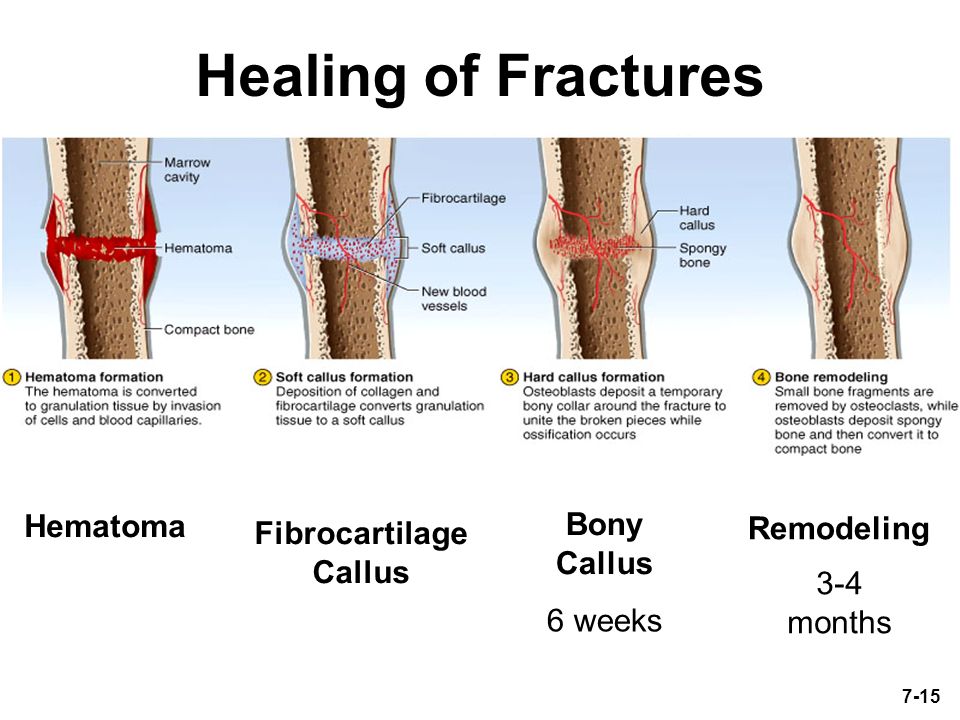
The iHealthSpot patient education library was written collaboratively by the iHealthSpot editorial team which includes Senior Medical Authors Dr. Mary Car-Blanchard, OTD/OTR/L and Valerie K. Clark, and the following editorial advisors: Steve Meadows, MD, Ernie F. Soto, DDS, Ronald J. Glatzer, MD, Jonathan Rosenberg, MD, Christopher M. Nolte, MD, David Applebaum, MD, Jonathan M. Tarrash, MD, and Paula Soto, RN/BSN. This content complies with the HONcode standard for trustworthy health information. The library commenced development on September 1, 2005 with the latest update/addition on April 13th, 2016. For information on iHealthSpot’s other services including medical website design, visit www.iHealthSpot.com.
Fractures of the clavicle – treatment, symptoms, diagnosis, consequences
Stenosing ligamentitis Traumatology Gouty arthritis
In trauma practice, a fracture of the clavicle is understood as a pathological condition that occurs as a result of a violation of the anatomical integrity of this bone. This pathology is registered in patients of different ages with a predominance of males among them. By location, fractures are distinguished, affecting the outer, middle and inner (sternum) third of the bone. According to the structure of fragments – transverse, oblique, comminuted. By the nature of the damage – open, closed or closed fracture of the clavicle with displacement.
This pathology is registered in patients of different ages with a predominance of males among them. By location, fractures are distinguished, affecting the outer, middle and inner (sternum) third of the bone. According to the structure of fragments – transverse, oblique, comminuted. By the nature of the damage – open, closed or closed fracture of the clavicle with displacement.
In adults, the causes of the disease are usually domestic, sports, industrial injuries, traffic accidents. In children and the elderly, such injuries are most often associated with an unfortunate fall. At the same time, patients complain of pain in the clavicle, dysfunction of the hand, the presence of a wound in open fractures. Help for a fracture of the clavicle is provided immediately after the discovery of the patient’s characteristic features – forced position of the hand, swelling and deformity in the clavicle area, hemorrhage into the surrounding tissues.
At the stage of emergency care, during the transportation of the victim to a medical institution, immobilization is carried out in case of a fracture of the collarbone with the help of splints, soft bandages. Treatment of a clavicle fracture in children and adults is carried out in a hospital setting, mainly through surgical intervention.
Treatment of a clavicle fracture in children and adults is carried out in a hospital setting, mainly through surgical intervention.
Main methods of treatment: open reposition of bone fragments with osteosynthesis and reposition when a plate is used for fracture of the clavicle. In each case, the doctor decides which method is best to eliminate the fracture of the clavicle. The operation, the price of which depends on the complexity of the damage and the tariff policy of the medical institution, is usually carried out in two stages. During the second operation, the fixing structure is removed.
Why it is important to treat fractures of the clavicle in time
In case of fresh closed, simple and non-comminuted fractures, timely immobilization of a clavicle fracture with soft and plaster bandages can help. Such conservative treatment is possible if the victim does not have soft tissue interposition and associated injuries. In other cases, and especially if treatment of a displaced clavicle fracture is required, surgical intervention is indispensable.
Rehabilitation after a displaced fracture of the clavicle includes mandatory x-ray control 3-6 weeks after surgery. Considering how long a clavicle fracture heals, the doctor evaluates the correct formation of the callus by X-ray. At the same time, it is determined whether the installed plate is stable in case of a clavicle fracture. The price of assistance with timely medical intervention will be minimal if complications can be avoided. The main complications are injuries to the pleura and neurovascular bundle, compression of the nerve plexus, and torn ligaments.
The best private traumatology clinics on the Likarni.com portal
Any patient has the opportunity to quickly find out where the surgery for a fracture of the collarbone is performed if they visit the Likarni.com portal. Its database contains information about the best clinics that provide trauma services on the basis of a license. Here you will also find the address of the medical centers you need, their work schedule and find out how much treatment for a broken collarbone costs in them. To make an appointment at the selected clinic, just fill out an online application on Likarni.com or contact the portal’s call center. After that, they will contact you, agree on the details of the visit to the doctor and make an appointment at a convenient time for you.
To make an appointment at the selected clinic, just fill out an online application on Likarni.com or contact the portal’s call center. After that, they will contact you, agree on the details of the visit to the doctor and make an appointment at a convenient time for you.
Similar symptoms:
- Tendovaginitis
- Epicondylitis
- Traumatic brain injury
- Tendinitis
- Deforming osteoarthritis
- Osteoarthritis
- Clinics
- Doctors
Kyiv clinics Traumatology
- Kyiv
- Kharkiv
- Dnipro
- Lviv
- Cherkasy
- Chernivtsi
- Chernihiv
- Brovary
- Odessa
- Sumy
- Poltava
- Rivne
- Zaporozhye
- Zhytomyr
- Kropyvnytskyi
- Kremenchuk
- Nikolaev
- Vinnitsa
- Krivoy Rog
- Kherson
- Khmelnitsky
- Ternopil
- Ivano-Frankivsk
- Uzhhorod
- Lutsk
CitiDoctor, full service surgical center
m./shoulder_pain_medreview-01-5c3b9f8546e0fb0001bdeaaa.png) Petrovka9 4
Petrovka9 4
metro station Obolon22 3
Kyiv
17/1, Stepan Bandery Ave.
CitiDoctor Full Cycle Surgical Center provides the full range of qualified medical care from diagnostics, surgical or medication treatment to rehabilitation and disease prevention. In the clinic, patients are received by plastic surgeons, surgeons, gynecologists, orthopedic traumatologists, proctologists, etc.
Sign up
or call:
+38 (096) 388-18-99
+38 (095) 751-31-63
+38 (093) 542-94-87
Doctors in Kyiv Traumatology
- Kyiv
- Kharkiv
- Dnipro
- Lviv
- Cherkasy
- Chernivtsi
- Chernihiv
- Brovary
- Odessa
- Sumy
- Poltava
- Rivne
- Zaporozhye
- Zhytomyr
- Kropyvnytskyi
- Kremenchuk
- Nikolaev
- Vinnitsa
- Krivoy Rog
- Kherson
- Khmelnitsky
- Ternopil
- Ivano-Frankivsk
- Uzhhorod
- Lutsk
Manual Plus, manual therapy center at KPI
Kyiv
st.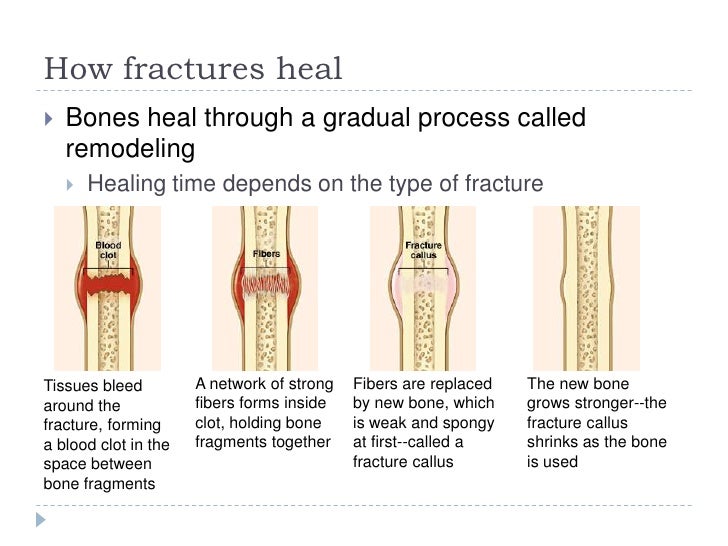 Wanda Vasilevskaya, 11
Wanda Vasilevskaya, 11
m.Polytechnic Institute8 2
m. Lukyanovskaya 21 5
m.Independence Square55 28
Diamed-express, clinic
Kyiv
st. Marshal Timoshenko, 14
m.Minskaya7 3
metro station Obolon16 4
Clinic Neurology and neuroorthopedics
Kyiv
blvd. Lesi Ukrainky 28a
m.Pecherskaya2 1
m. Friendship of peoples17 6
m.Palace Ukraine30 9
Into-Sana, medical center in Podil
Kyiv
st. Lower Val, 49 A
m.Kontraktova ploshcha6 4
m. Poshtova ploshcha19 6
m.Lukyanovskaya34 15
Into-Sana (Into-Sana) on Osokorki
Kyiv
st. Dnieper embankment, 25
m.Osokorki15 3
m.Poznyaki27 7
Into-Sana (Into-Sana) on Levoberezhnaya
Kyiv
st. Raisa Okipnoy, 4b
metro station Levoberezhnaya5 1
m.Darnitsa23 9
Into-Sana, medical center in Podil
Kyiv
st. Lower Val, 49 A
m.Kontraktova ploshcha6 4
m.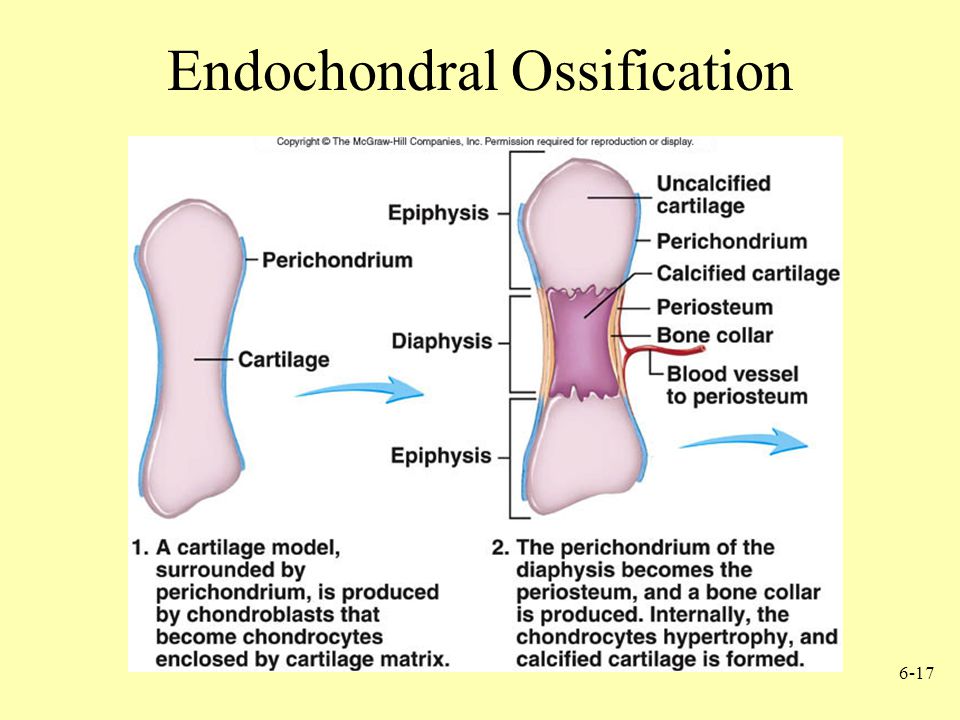 Poshtova ploshcha19 6
Poshtova ploshcha19 6
m.Lukyanovskaya34 15
Into-Sana (Into-Sana) on Osokorki
Kyiv
st. Dnieper embankment, 25
m.Osokorki15 3
m.Poznyaki27 7
Into-Sana (Into-Sana) on Levoberezhnaya
Kyiv
st. Raisa Okipnoy, 4b
metro station Levoberezhnaya5 1
m.Darnitsa23 9
Treatment of ruptures of the acromioclavicular joint company blog
Description of the disease, symptoms and causes, methods of treatment.
Acromioclavicular joint joint consists of two bones connected to each other by means of ligaments and the joint capsule. The joint belongs to the category of inactive, movements in which are possible only with high-amplitude swings of the hand. Despite such imaginary insignificance, the acromioclavicular joint performs a number of important biological functions, namely:
1) Participates in coordinated movements of the upper limb
2) Holds the shoulder blade
3) Performs a shock-absorbing function for the shoulder joint
Damage to the acromioclavicular joint is possible with injuries inflicted on the upper third of the shoulder and directly on the shoulder joint itself..png) Often, when in the scientific literature you can find an abbreviation like damage to the ACC, which is also the same name, shortened for ease of perception. Injuries to the acromioclavicular joint are not uncommon in the modern world.
Often, when in the scientific literature you can find an abbreviation like damage to the ACC, which is also the same name, shortened for ease of perception. Injuries to the acromioclavicular joint are not uncommon in the modern world.
Symptoms of damage to AKS
With damage to the acromioclavicular joint, the clinical picture depends on the severity of the injury and the location of the fracture, ligament rupture, dislocation, etc. Intense pain with limited mobility of the shoulder joint occurs with fractures and dislocations along the back line. If you examine the patient before the appearance of edema, that is, in the first hours, you can see the deformation in the area of the projection of the clavicle, as well as a false lengthening of the injured upper limb. With smaller injuries of the ACJ, pain appears only when making movements in the acromioclavicular joint.
Make an appointment with a traumatologist-orthopedist Ondar Temir Evgenievich and get an effective treatment program :
Treatments for ACL injury
Treatment of damage to the acromioclavicular joint remains an urgent task of modern traumatology and orthopedics due to the prevalence of this pathology and the presence of controversial issues regarding its treatment. Dislocations of the acromial end of the clavicle range from 7.0 to 26.1% of all skeletal dislocations and more than 10% of cases of acute shoulder girdle injury, ranking third in frequency after dislocations in the shoulder and elbow joints. To date, more than 270 conservative and more than 100 surgical methods for the treatment of dislocations of the acromial end of the clavicle (ACC) have been proposed.
Dislocations of the acromial end of the clavicle range from 7.0 to 26.1% of all skeletal dislocations and more than 10% of cases of acute shoulder girdle injury, ranking third in frequency after dislocations in the shoulder and elbow joints. To date, more than 270 conservative and more than 100 surgical methods for the treatment of dislocations of the acromial end of the clavicle (ACC) have been proposed.
All these methods are divided into conservative and operative methods of treatment.
conservative method
When using most known methods of treating ACL injury, prolonged immobilization is required, which reduces the functionality of the neuromuscular apparatus of the shoulder girdle and upper limb, makes early functional treatment impossible, and predisposes to the formation of contractures in the shoulder joint. This, in turn, requires additional rehabilitation treatment, which leads to an increase in the period of temporary disability.
With partial damage to the acromioclavicular joint in people leading an unsportsmanlike lifestyle, it is possible to use conservative treatment, which includes:
- restriction of physical activity;
- immobilization with an orthosis for 3–4 weeks;
- a course of physiotherapy procedures;
- medical gymnastics;
- massage.

Operational method
The main method of treating damage to the acromioclavicular joint, in particular with complete dislocation, when a rupture has occurred in both the acromioclavicular and coracoclavicular joints, is surgery. The surgical method allows you to eliminate the dislocation of the clavicle and stably fix it in a physiological position. There are various methods and approaches in the treatment of dislocation of the acromial end of the clavicle.
Types of operation: dislocation of the clavicle with torn ligaments
Fixation of the acromioclavicular joint can be carried out with metal clamps. The task of fixing the clavicle is to create conditions for the restoration of damaged ligaments. This method allows the patient to be treated in the postoperative period without external immobilization, to begin rehabilitation on the 12th day after the operation. The disadvantage of this method is the need for a second operation after 3–4 months in order to remove the retainer.

